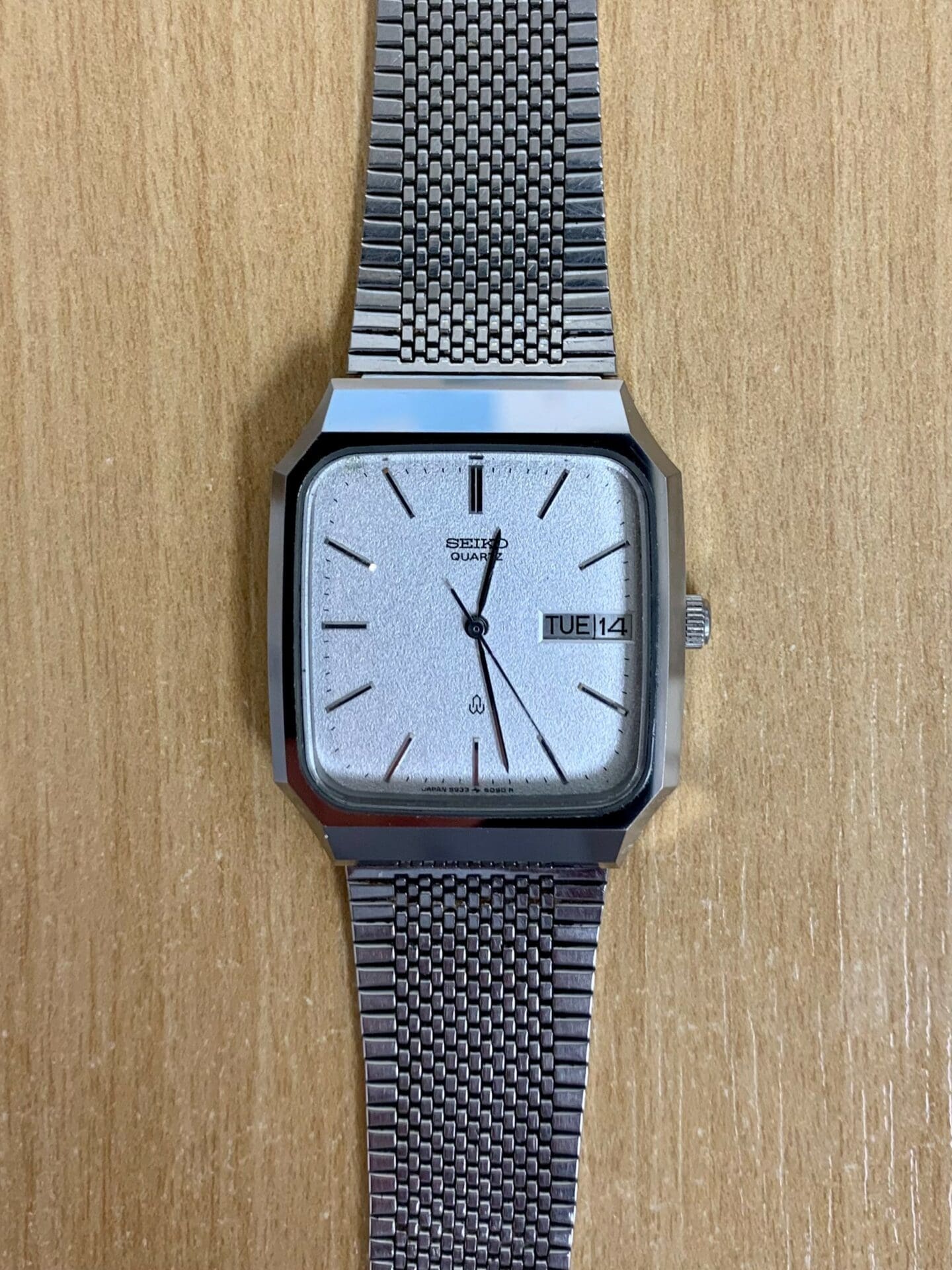How does this 1982 Seiko still manage to look so damn good and blemish-free?
Jason MarsdenAt first glance this looks like a fairly good condition vintage Seiko manufactured in the early 80s, a ref 5933-5080, with only a couple of hairline scratches betraying what may otherwise present as New Old Stock that’s never been sold at retail. But the super crisp case lines and practically unblemished surfaces are not due to this Seiko lying forgotten for years in a draw but rather the case material itself.
Today ceramic and sapphire are the words most associated with scratch resistance for watches but Seiko has a strong history of material research and development. Back in 1953 Seiko’s Sendai Precision Materials Laboratory began collaborating with the Institute of Materials Research at Tohoku University. They most notably developed the leading spring material, SPRON 100, later to be surpassed by their SPRON 510, a cobalt-nickel alloy with exceptional properties that has become their top performing mechanical watch spring found in both Seiko and Grand Seiko watches. SPRON is a contraction of spring and micron indicating the precision machining controlled to micron level.
With a Seiko case material designation SHA (silver hard alloy), this case is a nickel chromium alloy with a Vickers Hardness (Hv) of around 700. By comparison Seiko’s own HSS (hard stainless steel) sits at 450Hv and 316L Stainless steel is about 140Hv.
There is an even harder material that has been used in watch cases, tungsten carbide. Not actually a full metal, tungsten carbide could be considered the first ceramic used in watch cases but presents as a metal in its finished form. Manufacturers to experiment in the past with tungsten carbide cases include Rado, Lanco and, in particular, Movado.
Seiko also experimented with tungsten carbide cases in the 1980s (case material designation TUC) in their high-end Dolce range and a limited 300 piece Grand Seiko SBGT009 in 1998. With a hardness of 2600Hv it is harder than sapphire and second only to diamond. Tungsten carbide is also heavy (tungsten is Swedish for heavy stone) weighing 19.25 grams per cubic centimetre compared to gold at 19.30.
No doubt the engineering and machining requirements are why we don’t see any current tungsten carbide watches produced today, with even Movado no longer offering any full tungsten carbide case and bracelet options. Manufacturers are instead investing in black, white and coloured zirconium oxide ceramics with a Vickers Hardness of around 1300Hv.
Tungsten carbide is still found available in men’s rings although the emergency services absolutely hate them due to the difficulty in cutting them off in the event of a hand injury.
If you are a Seiko collector keep an eye out for one of these exotic hard-wearing cases from the 80s, you will be assured of a crisp case that will stay (mostly) scratch and wear free for the foreseeable future.






